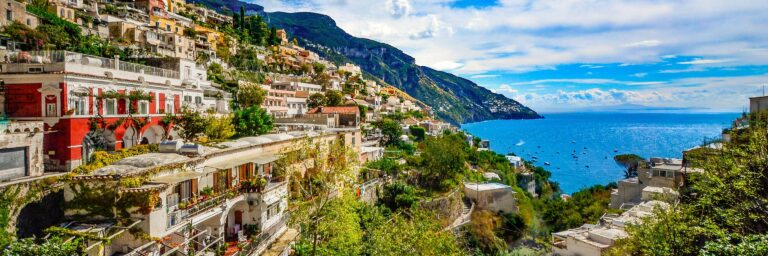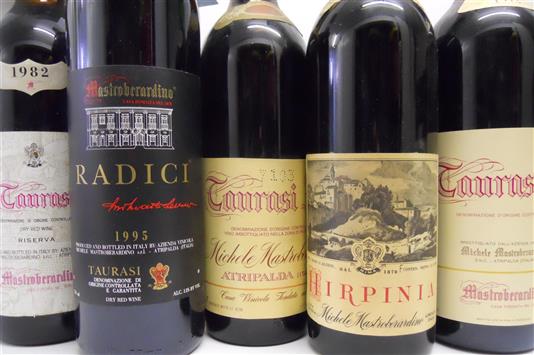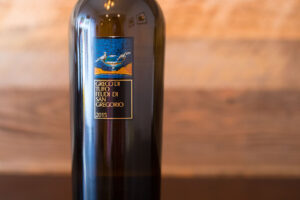I subjected myself to DNA testing not so very long ago. You know what I mean, one of those things where you spit into a cup and mail it away. Much less intrusive than the current Covid-19 test and the results are much more socially upbeat.
The city of Salerno turns out to be the ancestral home of the Italian side of our clan. Thus, the source of the surname Monica, an Italian word originating in Greece meaning “solitary.” Which makes little sense since I am anything but a loner. But I digress.
Salerno is an ancient city in the Campania Region located in southwestern Italy. It sits on the Gulf of Salerno located on the Tyrrhenian Sea, a mere thirty miles southeast of Naples and fifteen miles from Pompeo and its infamous volcano. The city and surrounding area have been continuously inhabited since prehistoric times. Residents are known to live unusually long lives, which may explain why my great-grandfather, grandfather and dad lived well into their 90’s.

The area is famous for its exuberant cuisine, including fresh seafood dishes like fried anchovies, swordfish rolls, octopus, mussels and a variety of fish soups and stews. The fertile soils yield bountiful amounts of fresh vegetable including lettuces, tomatoes, eggplants, peppers, garlic, zucchini, onions, and herbs including basil and oregano. Two of my favorite Campanian dishes are pasta with clam sauce and my mama’s ancient recipe eggplant parmigiana. Old fashioned peasant food. But the area’s chief claim to culinary fame is pizza. Most experts accept that the modern birthplace of pizza is Italy’s Campania region, with both Salerno and Naples laying claim to the honor.
THE WINES
Campania, like so many Italian regions, is the source of a wide array of grape varieties, both red and white. Its most respected red variety is Aglianico, the grape used in the production of the region’s two most heralded wines: Taurasi and Aglianico del Taburno. The area’s most popular whites are the sturdy Greco di Tufo and the extraordinarily sweet Greco di Bianco.
AGLIANICO
Campania’s vineyards are, in many ways, Italy’s most exciting. Many were planted with vines that are direct descendants of those brought to the area by the ancient Greeks. Aglianico is a red grape variety of enormous character. And, in fact, its name is derived from the Greek word Elliniko which literally means – Greek. It is a black grape grown chiefly in Basilicata and Campania, ranked alongside Sangiovese and Nebbiolo as the three most noble Italian varieties.

The finest versions of an Aglianico based wine are named for the town where they are produced – Taurasi. These wines are full-bodied and able to be aged, perhaps as-long-as 20 years. Despite their density, high levels of extract and tannin, they retain good power and finesse. The most famous of these is created by Mastroberardino, a winery located in Atripalda, in Provincia di Avellino. However, they are now rivalled by such producers as Caggian, Molettieri, Terredora di Paolo and the more contemporary-styled Feudi di San Gregorio. But common versions of Aglianico abound at your local wine retailer.
GRECO DI TUFO
Greco is most famously grown in the province of Avellino – historically, known as Irpinia, in and around the town of Tufo, just west of Taurisi and named for the tufaceous “limestone-like” soil in which it thrives. This is a dry white with aromas of lemon and pear with notes of almond and light minerality in the finish. Though not overly aromatic, Greco di Tufo wines are known to show characteristics of spice, herb and citrus. On the palate, the wines are medium to full-bodied and relatively high in acidity. Flavors will range from citrus, white fruit and stone fruit, and top examples will have a distinctive mineral character.
Top producers of Greco include Mastroberardino, Terredora, Feudi di San Gregorio and Vinosia. Mastroberardino is known for a classic style with these wines, with pretty fruit and crisp acidity with a light touch of minerality. Their premium bottlings – Greco di Tufo “Nova Serra” and Fiano di Avellino “Radici” are quite rich and complex, offering great subtlety and finesse. They are immediately appealing but also display greater complexities with 3-5 years in the bottle. However, once again, there are many labels available locally.

Homage To Papa
My beloved father adored and celebrated Italian wine. He loved pronouncing them with great Italian styled flair, as in – Sahn-Gēē-ōō-Vāā-Sēē! Alas, the wines of our heritage – Campania – did not become widely available in the United States until after his passing. But I am confident that if my father had a chance to experience the fantastic vintages of our Italian homeland, he would have joined me in boasting:
“La migliore del mondo!”
Look it up and… Alla Salute!
